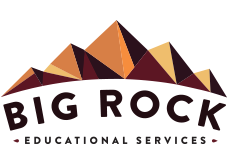
At BRES, we are honored to work alongside some of the most talented school leaders in the country. In today’s blog we had the incredible opportunity to sit down with Danielle Petters, recently named Dallas ISD’s Secondary Principal of the Year for her work at H. Grady Spruce High School. Petters, who has been a principal for 16 years, said the award’s most meaningful impact for her personally was reinforcing her sense of humility. Despite her successful track record and her numerous awards, Petters is approachable and open with her challenges. She operates with an admirable vulnerability that encourages others to hang on her every word. It’s no wonder that her leadership is transformational. We can’t help but notice how she starts nearly all her sentences with “we,” being intentional about giving credit to the collective work of her broader team. Today, we explore how her team modified their school’s hiring practices over the years, particularly after working with BRES. Thank you, Principal Petters for your collaboration and insights. As we continue our series on hiring, your selection journey provides an invaluable learning opportunity for all of us.
BRES: Can you describe your original hiring process?
Danielle Petters (DP): When I first started as a principal, we had 20 questions that we would ask and we would try to make them really tough so that the candidate’s true personality would come out. Our team was typically an AP and me, that was about it. That was the first iteration.
More recently, we would still ask the questions, but we added a component in which the candidate would teach a lesson. After the lesson, we would give them feedback and ask them to reteach the lesson. When we first started doing that, it wasn’t very common practice. Of course, it’s more common practice now.
BRES: How has your process evolved since then?
DP: Just as we started noticing that we needed to revamp our hiring process, my team coincidentally went to the training BRES held. We started to notice several challenges that we hadn’t faced before.
BRES: Interesting. What were some of those challenges?
DP: First, people who were hired started doing research about the school and neighborhood and would opt out before they started. They weren’t invested in what we were doing. Second, people weren’t passing background checks. Third, we just weren’t considered a sought-after place to work and that limited our potential candidate pool. We knew we needed to do something. We need people who want to be here, who understand the challenge, and who are excited for the work.
We sensed that we needed to push the decision back on the candidate; they needed to be choosing us as much as we were choosing them. We needed to be clear and transparent about expectations. They needed to know what we are and what we aren’t.
BRES: Great insights. So how did you respond?
DP: After the time with BRES, we made quite a few changes. First, we modified our questions so that they were scenario based and role plays. We put our candidates in the situation. For example, we asked them to role play that they were on the phone with an upset parent and show us how they would handle it.
We also added feedback throughout the whole process. We gave them feedback on the role plays, had them re-do. We also gave them feedback on the lesson delivery and then had them re-do. We analyzed how they accepted the feedback and how well they implemented it. We use this process consistently, with support staff, hiring for athletic directors, TAs, etc. We’ll even have kids in on the panels and allow them to provide feedback. This allows us not only to get their feedback, but also demonstrates for the candidates how much we respect our students and value their opinions.
We’ve also really tried to pull in more staff to the process.
BRES: Tell us more about why you decided to make the decisions more inclusive.
DP: For two reasons: (1) current staff gains more leadership experience and is invested in the person and the hiring decision and (2) the candidate understands that we value teamwork and that they are also accountable to the people who helped hire them.
BRES: Right. They know they can’t just close their door and operate without their team.
DP: Exactly. You know something else about this process is that it also helps us know where our candidates are going to need support. It gives us a more well-rounded view of the candidate. We can go into the school year ready to get started supporting them. It helps us get teachers ready for students much more quickly.
BRES: It must have taken you a while to arrive at your final process. How did you get there?
DP: We spent a whole semester hammering out this process. We decided on the protocol, we developed exemplars for each of the questions and scenario, the model lesson, etc. We wanted to make sure we knew what we were looking for to assess whether candidates were aligned with our vision. We discussed messaging we were going to give to candidates about what their role would look like so they knew exactly what they were getting into.
We discussed as a team exactly what makes a good resume and we did templates for the phone screen. We wanted to ensure that at any point in the process, anyone on our team could pick up the process at any point. We even created exemplar templates for the email we send when we reject them.
BRES: So, how did these changes in hiring practice play out on your campus? How did it help you achieve your goals?
DP: So many ways. For example, we went from 45% to 85% teacher retention after implementing these processes. This was so key because it meant you could build on the previous year. We’ve also made meaningful gains in student achievement.
[ A note from the editor here: Characteristic of her style, Petters is being quite humble in her description of student achievement growth. Just in her math state testing data alone, the campus had a 30-point gain from 2016 – 2017.]
BRES: Are there any other best practices you want to highlight for school leaders?
DP: Around November or December, I do a 1:1 new teacher feedback meeting. I gather data from those meetings. I ask four questions that help me guide my decision making and inform any changes we need to make in our hiring practice.
The four questions I ask are:
- Have we lived up to your expectations?
- What do we do best here?
- Is there anything you would change to make us better?
- Is there anything we’ve done that would cause you want to leave?
I typically find that because we’ve set the expectation from the beginning about our campus, particularly that being a staff member on our campus requires a fast learning curve, it accelerated our new staff’s ability to learn. Their experiences confirm what we told them, so there is that alignment. Which feels good and allows people to be more successful.
BRES: As we come to a close, will you share with us the most critical core values or skillsets you look for in candidates?
DP: Growth mind set, learning orientation, the right attitude, commitment to a sense of urgency, and the desire to collaborate. We work as a team.
BRES: Great. Okay, finally, what is the most critical staffing lesson that you want to share with school leaders who aspire to your level of success?
DP: First, you can’t do it by yourself. The second is that it’s an iterative process that must align to your campus values, vision, and mission. We’re always changing and fine-tuning. We look at all the people that we hire. We analyze teacher performance against our own protocol. When we didn’t follow up with what we said we were going to do, we always see it play out. We had struggles we wouldn’t have had. Just remember, everything you do is communicating to the candidate what you value and what you expect. We change constantly, we can’t stay stagnant. Third, as you make these changes, over time you start getting better candidates. People start talking. When you start getting a different level of candidate, your process can evolve.
BRES: Wow. We really enjoyed speaking with you today. You are so thoughtful about your hiring intentionality, creating rubrics and exemplars, and really every part of the process here.
DP: Yep and I now have a team that thinks like that too!
